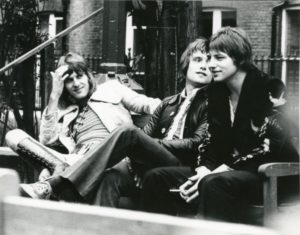 In the wider context of the development of electronic music, the place of Keith Emerson is an interesting one.
In the wider context of the development of electronic music, the place of Keith Emerson is an interesting one.
His influence on keyboard players the world over is undeniable, but it could also be argued that by being too accomplished a musician, he helped spark the catalyst that eventually spawned punk, which in itself gave birth to the first wave of commercial synthesizer-based artists.
In the ‘Synth Britannia’ documentary, Phil Oakey is interviewed about the role of the keyboard player, saying “Until punk came along, you had to be Keith Emerson. If you wanted to be in a band you had to have learned your instrument for at least 8 or 9 years before you would dare come out and play it”.
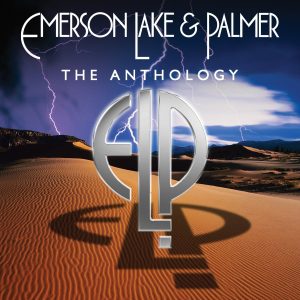 One of the outcomes of the punk era was that it coincided with the availability of affordable, commercial sounding monosynths – these were soon used (often) in a primitive one-finger manner that eventually brought electronic music to the masses.
One of the outcomes of the punk era was that it coincided with the availability of affordable, commercial sounding monosynths – these were soon used (often) in a primitive one-finger manner that eventually brought electronic music to the masses.
The ultimate impact of this musical and technological revolution was that bands such as ELP and GENESIS very quickly began to sound dated and were forced to either adapt or die…
Following the tragic death of Emerson earlier this year, BMG have released the first set of four albums which help to re-establish the legacy of the band and provide an excellent way to re-assess the importance of ELP in the grand scheme of keyboard and synthesizer-based music.
Progressive Rock was the complex lovechild of classical music, psychedelia and jazz improvisation; in many ways throwing out the rulebook of rock and pop music which came before it. Instead of concise three minute songs, concept albums were born where whole sides were taken up by pieces which often had a linking theme and allowed the musicians to show off their musical dexterity.
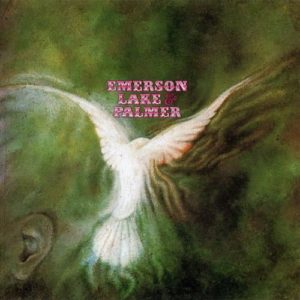 Although at this point, rock bands with keyboard players were commonplace (eg GENESIS and DEEP PURPLE), the guitar still very much dominated proceedings and what made ELP (and latterly YES) eventually stand out was the use of keyboards as a prominent instrument rather than a texture to underlay the guitar player(s) in the band. The approach of Emerson as the live showman also brought the keyboard player out of the limelight and his live antics (which included stabbing his Hammond organ with knives and riding it across the stage) have since gone down as the stuff of rock and roll legend.
Although at this point, rock bands with keyboard players were commonplace (eg GENESIS and DEEP PURPLE), the guitar still very much dominated proceedings and what made ELP (and latterly YES) eventually stand out was the use of keyboards as a prominent instrument rather than a texture to underlay the guitar player(s) in the band. The approach of Emerson as the live showman also brought the keyboard player out of the limelight and his live antics (which included stabbing his Hammond organ with knives and riding it across the stage) have since gone down as the stuff of rock and roll legend.
The eponymous EMERSON, LAKE & PALMER debut album released in 1971 is very much dominated by the sound of the Hammond organ and showcases the sound of a band hitting the ground running. Tracks like ‘The Barbarian’ ably demonstrate the musicianship of all involved, Emerson seamlessly switching between organ and piano throughout.
The pivotal work featured here is undoubtedly ‘Lucky Man’, for the first three minutes or so the song is a well-written folk-oriented ode to a privileged individual who lives a charmed life before eventually losing his life in a war. The layered harmonized chorus vocals continually build the track, but it is the outro of the song which makes it so important in the context of keyboard-based music with one of the first appearances of a synthesizer solo on a commercial single.
Emerson apparently improvised the part in one take and one can only imagine the impact that this gliding, panning and swooping Moog sound would have had on a public (and other keyboard players) which up until this point, had been used to guitar solos taking prominence.
There has been a lot of speculation that a Minimoog was used in the recording, but because of the release date of the album and the fact that the Minimoog itself only appeared a year later, Emerson would have used a Moog Modular to perform the part. The sound itself being a layer of three detuned oscillators each with a square wave and copious amounts of portamento to get the gliding effect. The reissue itself comes as a 2 CD set with CD1 comprising the original 2012 remastered version and CD2 featuring a stereo mix by Steven Wilson with some added bonus tracks.
Follow-up ‘Tarkus’ saw a progression in the ELP sound and the presence of more electronic textures. Giving the band a No1 album in the UK, the packaging and discs follow a similar format to the other albums in this set.
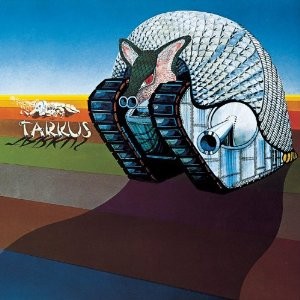 The title track is a Prog Rocker’s dream, spilt into several movements; the opening section ‘Eruption’ sounding now like a frantic film soundtrack to an imaginary cop movie. But again it is the use of synths that underpin the piece that give it most interest and with slower sections like ‘Stones of Years’ alongside works by PINK FLOYD, it is clear how these pieces would ultimately go onto influences acts such as AIR and JOHN GRANT. The gliding synth that first made its appearance on the debut had now become Emerson’s trademark and the signature sound of the band.
The title track is a Prog Rocker’s dream, spilt into several movements; the opening section ‘Eruption’ sounding now like a frantic film soundtrack to an imaginary cop movie. But again it is the use of synths that underpin the piece that give it most interest and with slower sections like ‘Stones of Years’ alongside works by PINK FLOYD, it is clear how these pieces would ultimately go onto influences acts such as AIR and JOHN GRANT. The gliding synth that first made its appearance on the debut had now become Emerson’s trademark and the signature sound of the band.
‘Pictures At An Exhibition’ saw the release of a live performance of the band’s interpretation of Mussorgsky’s classical work. The album was recorded at Newcastle City Hall with the opening track being played on a Harrison & Harrison pipe organ which was installed in the venue.
The drum roll which connects the opening track ‘Promenade’ to the next just gave Emerson enough time to dash down to his normal keyboard rig. At the time, the band’s label were reluctant to release it, fearing that a live classical album would be too much of a risk. But with the success of Tarkus, a budget price release meant that ‘Pictures At An Exhibition’ gave the band its third consecutive Top 10 UK album.
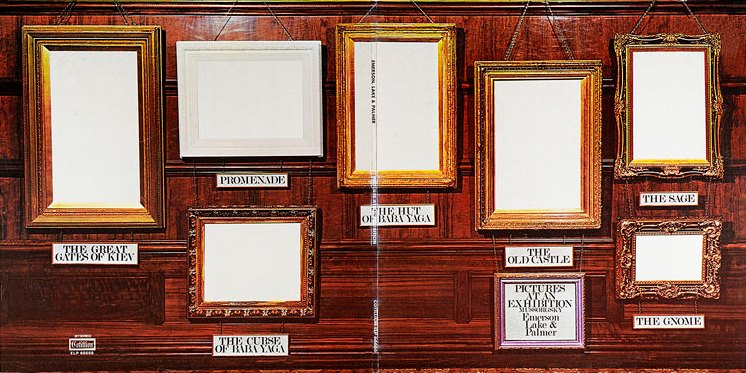 To support these reissues, a more cautious introduction to ELP comes with the 3CD release of ‘The Anthology’
To support these reissues, a more cautious introduction to ELP comes with the 3CD release of ‘The Anthology’ – featuring a career spanning selection of 39 songs including the band’s best known single ‘Fanfare For The Common Man’. The compilation also takes in some solo works by Emerson and Greg Lake, including the latter’s festive classic ‘I Believe in Father Christmas’.
Whilst the material in these four albums will never be as significant as (say) the works of KRAFTWERK or TANGERINE DREAM in the grand scheme of electronic music, Keith Emerson will ultimately go down in musical history as THE musician who helped popularise the use of synthesizers in a band context.
That fact alone guarantees his and the band’s place on the timeline of synthesized music and these lovingly repackaged albums help to maintain the legacy of Keith Emerson, Greg Lake and Carl Palmer.
Dedicated to the memory of Keith Emerson 1944-2016 and Greg Lake 1947-2016
With thanks to Stuart Kirkham at Hall Or Nothing PR
‘Emerson, Lake & Palmer’, ‘Tarkus’, ‘Pictures At An Exhibition’ and ‘The Anthology’ are available from 29th July 2016 via BMG
http://www.emersonlakepalmer.com/
https://www.facebook.com/EmersonLakePalmer
Text by Paul Boddy
25th July 2016, updated 8th December 2016

Follow Us!